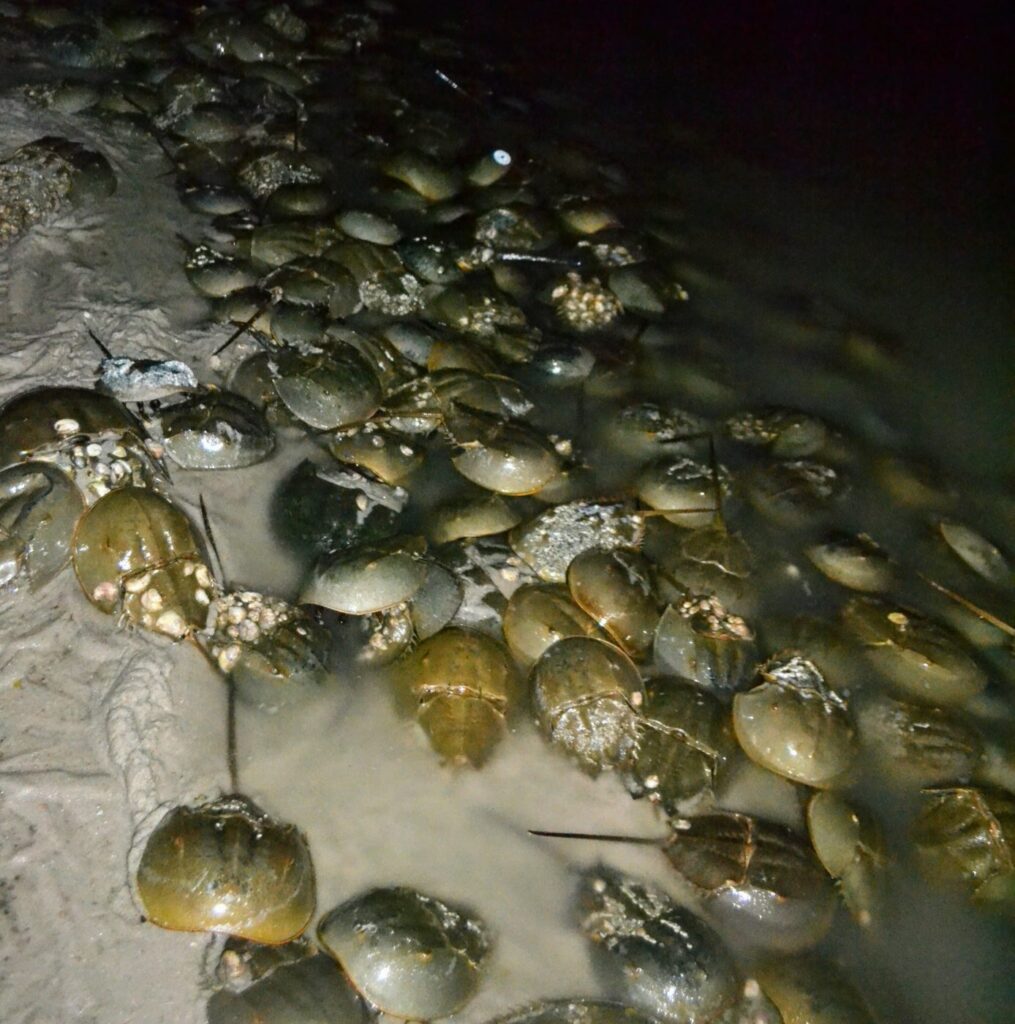Inland Bays Horseshoe Crab Survey
The Horseshoe Crab Survey, initiated in 2008, is the longest-running of the three long-term volunteer monitoring programs at the Center.
Since then, the Center partners with local researchers and volunteers to measure the horseshoe crab (HSC) population in the Inland Bays. The Inland Bays HSC are ecologically part of the Delaware Bay population, one of the largest aggregations of HSC in the world, and ecologically distinct from the Long Island and Virginia populations.
Each year, horseshoe crabs come ashore by the thousands (so far peaking in 2019 peak year number at 32,547 crabs) to spawn on the sandy beaches of our Bays, volunteers will meet them on beaches around the Inland Bays with flashlights in hand, bug repellent in their pockets, and old sneakers on their feet, carrying the equipment necessary to count them at the water’s edge.
The survey, updated in 2015, serves as a complimentary data set to the Delaware Bay spawning survey program. Comparisons with the Delaware Bay data are especially useful when unusual patterns/years are detected by either survey. Once ten years of spawning surveys are completed in the Inland Bays (2025), the Center’s dataset is intended to be submitted to the Atlantic States Marine Fisheries Commission for consideration during regular stock assessment updates.
The surveys are conducted by volunteers at six sites in Indian River and Rehoboth Bays, and once every five years at a site in Little Assawoman Bay. Counts are performed at high tide for three nights around each new moon and full moon in May and June, for a total of twelve surveys per beach. Each site has a volunteer leader and a team of volunteers to assist. Working teams of three or more; two handling the equipment and counting, and one keeping dry to record the data, work their way down the beach, subsampling the crabs to determine the male: female sex ratio. A healthy male-to-female ratio indicates a population likely to spawn successfully and maintain genetic diversity in the population.
Volunteers involved in data collection are trained annually in survey protocols and safety. Survey training is also hosted virtually and recordings are made available afterward on the Center’s website.

